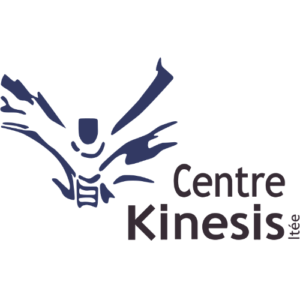Osteopathy for babies
More and more studies show that the course of pregnancy has an influence on the physical and emotional state of babies.
The fetus undergoes several constraints: mechanical (restricted uterine space due to surrounding organs or blockages/tensions from the mother), emotional (hormone and glucose levels vary according to the level of stress or emotions – sadness, fear, anger, etc.-), environmental (noise, toxins, tobacco, pollution, etc.) and physical (drugs, alcohol, food, disease, etc.). He also undergoes traumatic events (fall, accident, etc.) experienced by the future mother.
In addition, it must be considered that childbirth, as moving as it may be, nevertheless remains a significant physical (and sometimes emotional) trauma.
Osteopathic treatment adapted to babies
The osteopathic treatment adapted to babies makes it possible to prevent possible structural blockages. These could, in the long term, lead to functional disturbances, tensions or postural problems. It also makes it possible to resolve or significantly reduce discomfort or unpleasant symptoms in newborns.
The motor development of babies takes place step by step. For example, before being able to crawl, the newborn will begin by getting used to the prone position. Thereafter, he will develop the muscles of his neck to be able to raise his head and, from week to week, he will rise more and more on his forearms. Eventually, he will have enough strength and stabilization in his back, pelvis and lower limbs. Besides that, he will also have to develop a coordination of movements to move forward.
All these steps require a good dose of perseverance and a curious desire to get closer to an object or a person. This muscular and nervous development is strongly compromised, even impossible to do if one or more structures is in "lesion". By lesion, we mean here one or more blocked vertebrae, tension on the dura mater, rigidity in the condyles of the skull… In short, a blockage at the structural level that causes movement to be slowed down, painful or difficult.
Osteopathic treatment aims to restore mobility and flexibility to blocked structures to improve position (posture), movement and vitality.
Are osteopathic techniques painful?
The techniques are gentle; it often happens that the baby falls asleep during the treatment.
Depending on the day, the problem or the area treated, the baby may cry. These cries can be divided into two distinct categories. Either the baby cries to express something, he cries with his hands open; it means that he feels that something is happening in his body and points it out to us, he verbalizes it with us. At this point, the therapist completes the technique (a few seconds) and the crying stops immediately. The second possibility is that the baby cries more intensely and that it continues. If the child cries while closing his hands or tries to remove my hands from his body, it is either because he is in pain or because he has another need to meet (a treatment accelerates digestion, so they have often hungry during the session) or that he tells us that he does not want to be treated in this region or that day. Just like an adult who has good days and bad days, we believe that babies must have their right to “refuse” treatment respected.
In order to establish a reassuring contact with the baby, we ask for your cooperation. The treatment is done in the game. We have several toys and we adapt to the needs of snacks, breaks... of the little ones. Babies and children react quickly to treatments so generally only a few sessions are needed.
Problems treated effectively in osteopathy:
At the digestive level
- Difficulty sucking
- reflux
- Vomiting that is too profuse, too frequent, or "jet"
- Colic
- Constipation
At the respiratory level
- Sinusitis
- Bronchitis
At the oral / immune level
- Recurrent ear infections
- Recurrent colds
- Reduced vaccine side effects
At the cranial level
- Plagiocephaly – “flat head” or misshapen
- Blocked tear duct – eye running all the time
- Suture that is slow to close
At the cervical level
- Congenital torticollis
- Baby always turning his head to the same side
At the structural level
- Blocked vertebra or pelvis
- Always stand on the same side
- Following a severe fall
At the functional level
- Unable to maintain prone position
- Unable to crawl
- Does not walk on all fours or walks on all fours with a bent knee
Marche
- balance problem
- Walk on tiptoes
The nervous system
- Difficulty falling asleep
- attention deficit
- Anxiety
- Nervousness
- Irritability
- anger
- Sadness
The osteopathic treatment of babies is a gift for life for your child… It is a tool for prevention and well-being for the whole family.

Leave a Reply
Want to join the discussion?Feel free to Contribute!